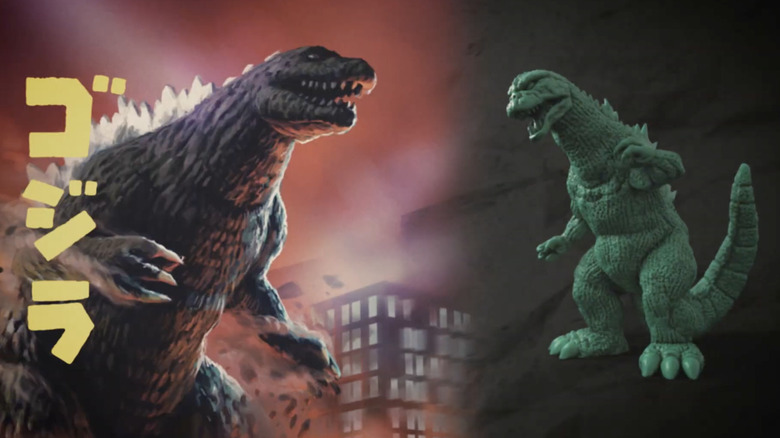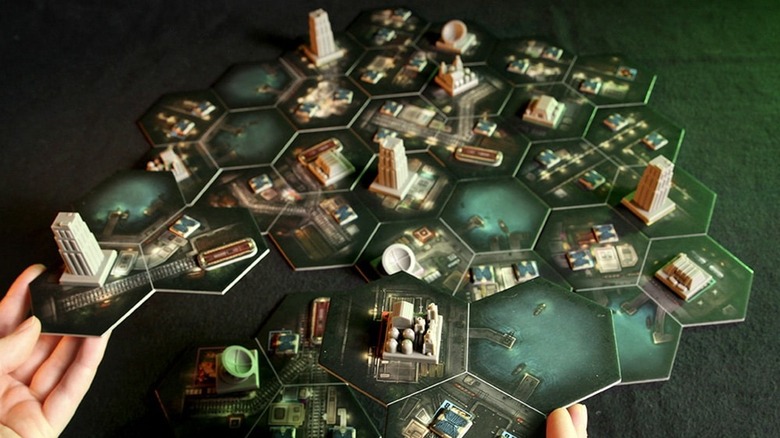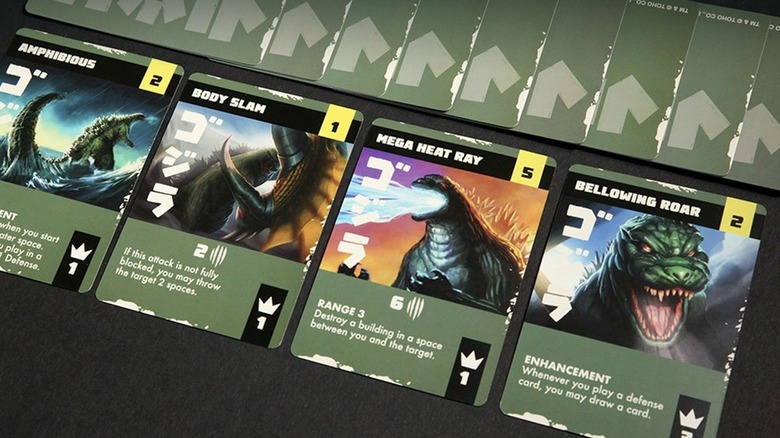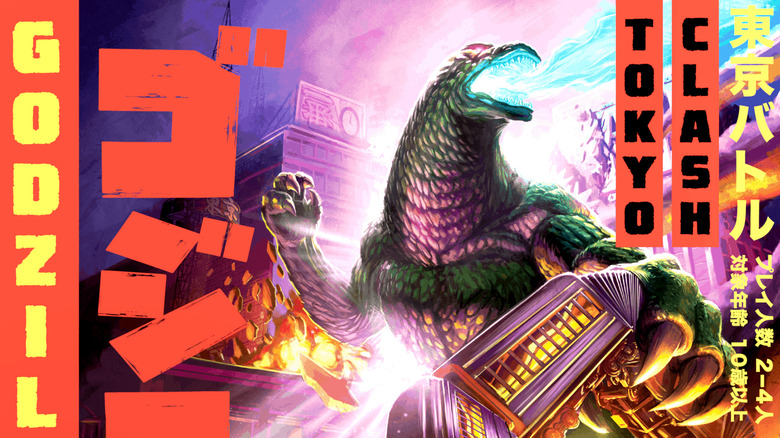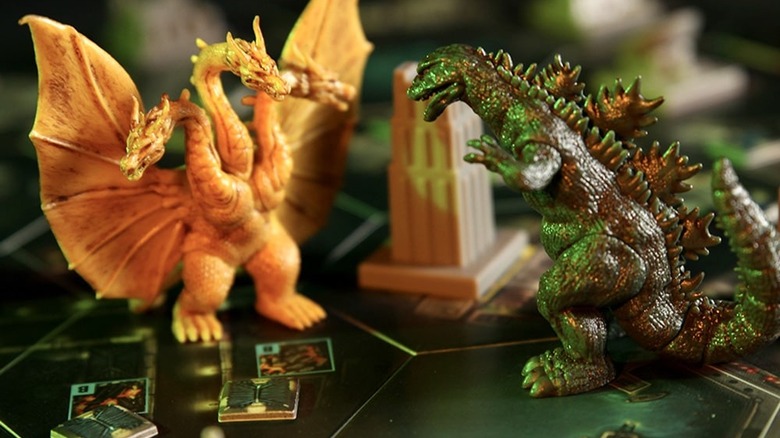Godzilla: Tokyo Clash Designer Explains Why His Game Is 'The Best Kaiju Fighting Game' For Godzilla Fans
It has been 70 years since the release of the original "Gojira," and somehow, the "Godzilla" franchise shows no signs of slowing down. Just this month alone, "Godzilla Minus One" took home some of the most prestigious awards in Japan's film industry, while Legendary Studios's "Godzilla x Kong: The New Empire" is projected by box office pundits everywhere to kick things off with a massive opening weekend.
But the influence of this franchise goes far beyond the screen. As a new generation of fans is introduced to Godzilla, they can also bring those characters to their table through games like Prospero Hall's "Godzilla: Tokyo Clash." In addition to our review of the popular Prospero Hall title, we spoke to designer Aaron Donogh, who shared the process of bringing Toho Studios's iconic kaiju to the table — and what the future could've held for more "Godzilla" games set in different eras of the franchise.
Theme always comes before game design
Ask a dozen different board game designers what comes first, mechanics or theme, and their responses might vary depending on the day or the project. For game designer Aaron Donogh, though, the answer is more straightforward. "Theme comes first," he explains, noting that his "inside-out" approach to game design starts with identifying core thematic moments to build around. To find those moments for "Godzilla: Tokyo Clash," Donogh spent a week watching nothing but "Godzilla" movies — 32 in total.
As he made his way through the series, Donogh quickly decided that humans should play a secondary role in the battle between characters. "Humans are a nuisance, generally," he explains. "So I thought, well, I'll make them a nuisance and help them keep resources feeding onto the board in the later rounds, but it's got to be about beating up the other monsters." This narrative decision drove the balance between humans and kaiju, making "Godzilla: Tokyo Clash" more of an environment-rich brawler than a true player-versus-environment title.
The movies also helped Donogh identify the different playstyles for each monster. One example he gives is Mothra, whose unique relationship with humans in the movies required the design team to tweak her abilities to reach a more symbiotic relationship with the environment. "In all the Godzilla films, Mothra is a good guy and a protector," he explains. "So maybe they shouldn't be destroying buildings in the same way."
Of course, one of the biggest perks of developing a "Godzilla" game is choosing which kaiju Godzilla should face. It was here that Donogh put his thumb on the scale. "Megalon is in this game just because I think he looks cool," he says with a smile. While Donogh admits that there are probably other kaiju whom fans would've preferred, the designer loves that Megalon "looks different from all the other monsters, and he has a lot of weirdness to the way he attacks with his drill hands."
Godzilla: Tokyo Clash's secret weapon was a video store
Even for an experienced design team, it's no small thing to unpack 70 years of "Godzilla" movies. As the franchise has expanded and evolved over the decades, the canon has evolved alongside it, and Donogh notes that there are a few design tweaks in the game that may fall a bit outside of the accepted canon for hardcore "Godzilla" purists.
But from the beginning, Prospero Hall benefited greatly from the support of Toho Studios, the Japanese production company that holds the license to the "Godzilla" franchise. While the studio did have a few requests for the game — "The whole atomic side of Godzilla, they like to tone down," Donogh notes — it generally let Donogh propose gameplay ideas rather than the other way around. "Some licensors come to the table with a lot more restrictions, but Toho was pretty chill," he recalls.
Donogh and his team also had a secret weapon: Scarecrow Video, Seattle's famous not-for-profit video rental store. Because Prospero Hall and Scarecrow Video shared a building, the team would frequently run downstairs to rent "Godzilla" movies and dissect key kaiju battles for their game. "We joked that if somebody wanted to know what games we were working on, they could just hang out downstairs and see what we were running [to rent]," Donogh adds.
We almost had a Godzilla tabletop universe
Part of the charm of the "Godzilla: Tokyo Clash" box art is its commitment to Shōwa-era graphics, which combine the bright colors and bold typography of that period in poster design. According to Donogh, the era-specific artwork on the box was also a sign of where he hoped to take the series.
Donogh had originally pitched the idea of a "Godzilla" game with zero English on the cover — an idea that made it through a single round of mockups before the team decided it was too confusing for a mass-market audience. But even from the beginning, Prospero Hall had plans for a game franchise that would explore every corner of the "Godzilla" universe. "It's an expandable system, hopefully," Donogh explains. "If it did well enough, the plan was to keep making more monsters."
Donogh's team hoped to tie each new release to a different era of "Godzilla" movies, moving progressively forward in time until each version of Godzilla shown on screen was the centerpiece of its own box. "If we did a second box, Mechagodzilla would be the Godzilla of that box, and we'd put Hedorah in there," he explains. "And then we'd move forward to the third box, which would be more of a Heisei period, '80s-'90s Godzilla."
Unfortunately, with Prospero Hall the latest victim of continued corporate downsizing in the entertainment space, the planned "Godzilla" series seems capped at one. But Donogh, who had already moved on from the company, will still pour one out for the SpaceGodzilla that never was. "That's my favorite period of Godzilla movies," he admits. "I love Destoroyah."
Bringing new Godzilla fans to the table
No matter what the future holds for Prospero Hall, copies of "Godzilla: Tokyo Clash" are still widely available online, which means that franchise fans can create their own kaiju battles after catching "Godzilla x Kong: The New Empire" in theaters this year. And while there are a handful of games on the market that allow players to take on the role of monsters rampaging through cities, Donogh has high hopes for what fans of the Legendary Pictures MonsterVerse will find when they sit down with a copy of his game.
"I hope that they'll find the best kaiju fighting game on the market that simulates the action of those fights in a strategic way," Donogh concludes. So, even as the franchise moves towards big stars and even bigger budgets, "Godzilla: Tokyo Clash" is a welcome reminder that the battles between men in rubber suits can be just as much fun today as it was decades ago.
